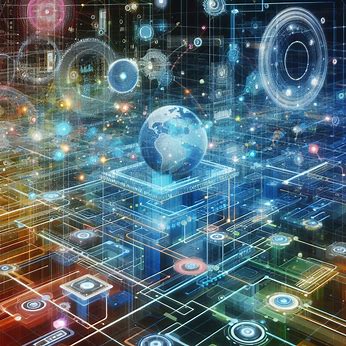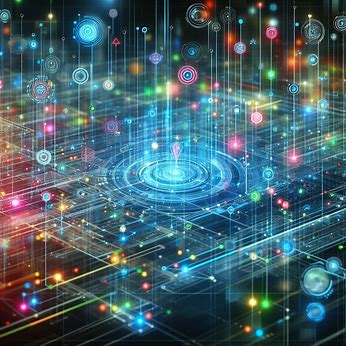Impact of Smart Grid Technology
In the hunt for a more sustainable and flexible energy future, smart grid technology has surfaced as a transformative result. By integrating advanced digital communication and control capabilities into traditional electricity grids, smart grids optimize energy generation, distribution, and consumption, leading to bettered effectiveness, trustability, and environmental sustainability. In this composition, we explore the elaboration, principles, benefits, challenges, and unborn prospects of smart grid technology, pressing its pivotal part in shaping the energy geography of the 21st century.
Comprehending Smart Grid Technology
A smart grid is an intelligent electricity network that utilizes advanced seeing, communication, and robotization technologies to cover, dissect, and optimize the inflow of electricity in real- time. Unlike traditional electricity grids, which operate on a one- way inflow of power from centralized generation installations to end- druggies, smart grids enable bidirectional communication and control between grid drivers, serviceability, and consumers.
The crucial factors of a smart grid include
1. Advanced Metering structure( AMI) Smart measures equipped with two- way communication capabilities enable real- time monitoring of energy consumption, remote cadence reading, and demand response programs. AMI provides consumers with detailed perceptivity into their energy operation patterns and enables serviceability to apply time- of- use pricing and demand- side operation strategies.
2. Distribution robotization Intelligent detectors, switches, and control systems are stationed throughout the distribution network to descry and respond to faults, outages, and voltage oscillations in real- time. Distribution robotization improves grid trustability, reduces outage durations, and enables tone- mending capabilities by automatically rerouting power flows to minimize dislocations.
3. Grid- Connected Renewable Energy Sources Integration of renewable energy sources, similar as solar photovoltaics( PV), wind turbines, and energy storehouse systems, into the grid enables decentralized generation and reduces reliance on fossil energies. Smart grid technologies grease the flawless integration of variable renewable energy sources and enhance grid stability and adaptability.
4. Demand Response and Energy Management Systems Demand response programs enable serviceability to incentivize consumers to acclimate their electricity consumption patterns in response to force constraints, grid conditions, or price signals. Energy operation systems, including smart thermostats, appliances, and electric vehicle dishes, enable consumers to optimize their energy operation and reduce costs.
Benefits of Smart Grid Technology
Smart grid technology offers multitudinous benefits for serviceability, consumers, and society as a whole, including
1. Improved Energy Efficiency Smart grid technologies enable serviceability to optimize energy distribution, reduce losses, and minimize destruction, leading to bettered overall energy effectiveness and resource application.
2. Enhanced Grid trustability and Adaptability Distribution robotization, fault discovery, and tone- mending capabilities ameliorate grid trustability, reduce outage durations, and enhance adaptability to extreme rainfall events and cyberattacks.
3. Integration of Renewable Energy Smart grids grease the integration of renewable energy sources into the grid by enabling real- time monitoring, control, and operation of variable generation sources, similar as solar and wind power.
4. commission of Consumers Smart measures, energy operation systems, and demand response programs empower consumers to cover their energy operation, acclimate consumption patterns, and make informed opinions to reduce costs and environmental impact.
5. Environmental Sustainability By promoting the use of renewable energy, optimizing energy distribution, and reducing reliance on fossil energies, smart grid technology contributes to mollifying climate change and reducing hothouse gas emigrations.
Challenges and walls
Despite its multitudinous benefits, smart grid technology faces several challenges and walls to wide relinquishment, including
1. High original Costs The deployment of smart grid structure, including advanced measures, detectors, communication networks, and control systems, requires significant outspoken investment, which may pose fiscal challenges for serviceability and governments.
2. Interoperability and comity Integrating different technologies, systems, and bias from multiple merchandisers into a cohesive smart grid ecosystem requires interoperability norms, protocols, and comity testing to insure flawless communication and operation.
3. Data sequestration and Security enterprises Smart grid technologies induce vast quantities of data related to energy consumption, grid operations, and consumer geste , raising enterprises about data sequestration, cybersecurity, and implicit abuse of sensitive information.
4. Regulatory and Policy walls Outdated nonsupervisory fabrics, mileage business models, and policy impulses may hamper the relinquishment of smart grid technologies and limit invention in the electricity sector. Clear and harmonious regulations, impulses, and request mechanisms are demanded to promote investment in smart grid structure and services.
Internet of effects( IoT) Integration The proliferation of IoT bias, detectors, and selectors enables the flawless integration of smart grid factors into a broader ecosystem of connected bias, systems, and services, enhancing interoperability, robotization, and intelligence.
Artificial Intelligence and Machine Learning Advanced data analytics, machine literacy algorithms, and prophetic analytics ways enable serviceability to dissect large volumes of data in real- time, identify patterns, optimize grid operations, and anticipate unborn demand and force trends.
Distributed Energy coffers Management Emerging technologies, similar as blockchain, peer- to- peer energy trading platforms, and virtual power shops, empower consumers to share in decentralized energy requests, share fat energy, and monetize their renewable energy means.
Grid- Edge Intelligence Edge computing, edge analytics, and edge bias stationed at the grid edge enable localized processing, decision- timber, and control, reducing quiescence, perfecting responsiveness, and enhancing grid adaptability.
flexible Microgrids Microgrid technologies, combined with smart grid capabilities, enable communities, premises , and critical structure installations to operate autonomously during grid outages or extremities, furnishing dependable and flexible electricity force.
Conclusion
In conclusion, smart grid technology represents a paradigm shift in the way we induce, distribute, and consume electricity, offering a pathway to a more sustainable, effective, and flexible energy future. By using advanced digital communication, control, and robotization capabilities, smart grids optimize energy coffers, enhance grid trustability, and empower consumers to laboriously share in the energy transition. As we continue to advance smart grid technology through invention, collaboration, and policy support, it's essential to prioritize sustainability, affordability, and inclusivity to insure a just and indifferent energy transition for all.
RELATED POST....
radiation Protection technology
transportation technology on mars
Impact of Technology on Ancient Industries
the Environmental impact of E west
augmente reality in feild passage
nassa mission to touch the sun
important Rocket Set to Soar into the Cosmos
20 Instances of Digital Technology
wolrd fastest wooden satellite in 2024
Electric vehicles charging in 2024
Ultraloq Bolt and the Smart Lock
Unraveling the Apple Patent Dispute:
CineBeam Qube 4K UHD Projector
Twitter-X Elon Musk Content Moderation
tesla Cybertruck crash in palo alto




.jpeg)


.jpeg)








.png)
.png)
0 Comments